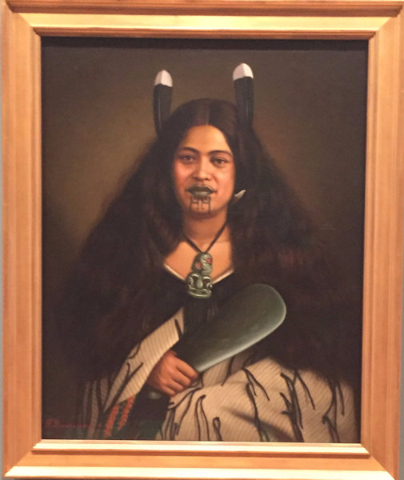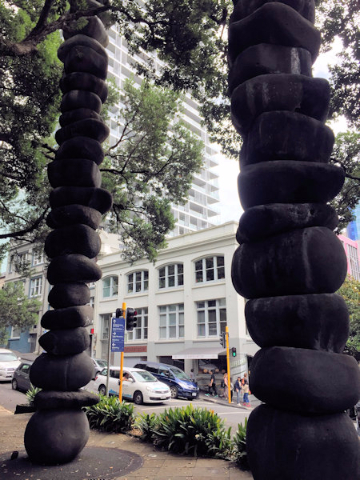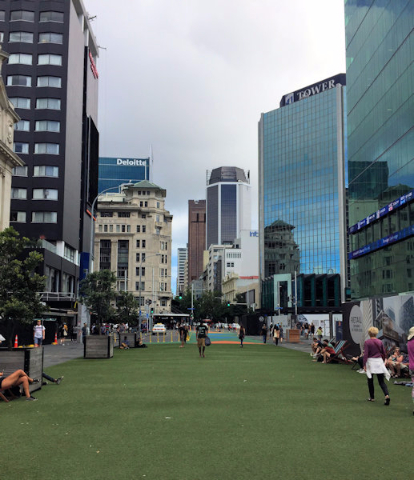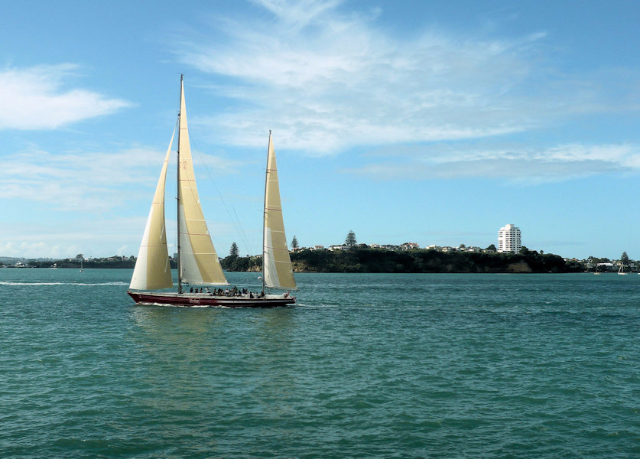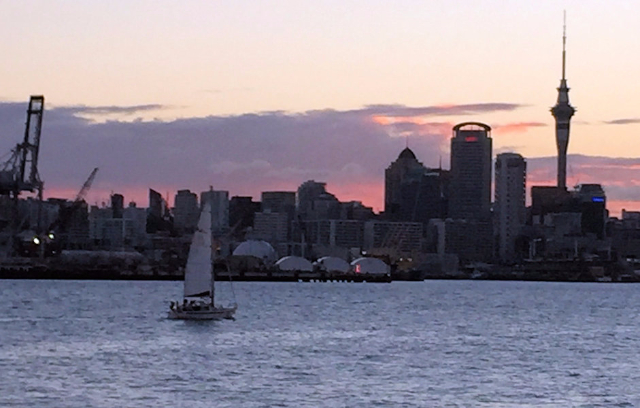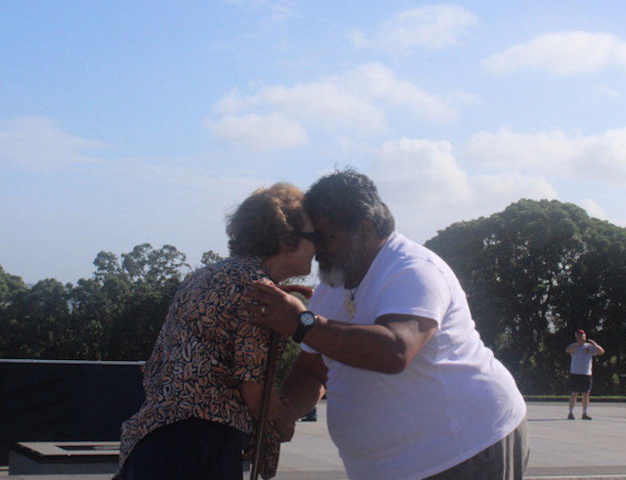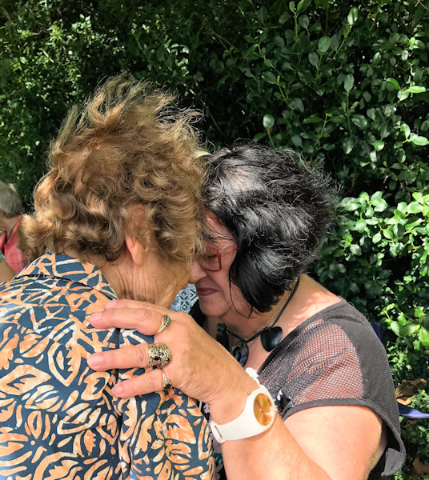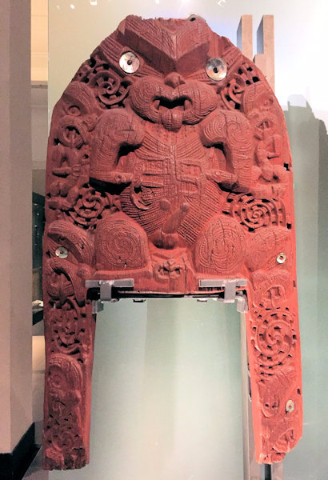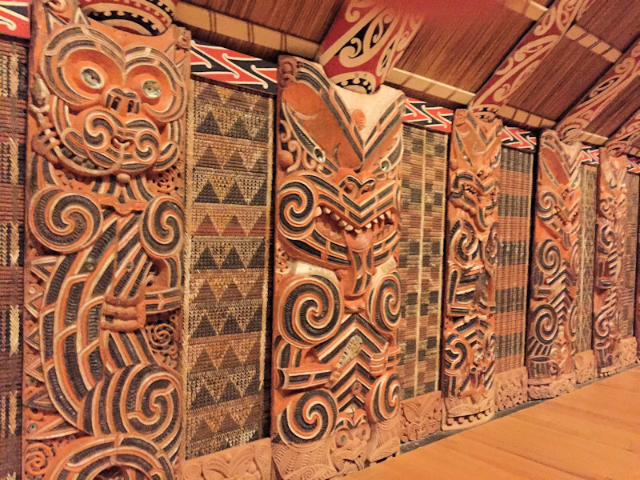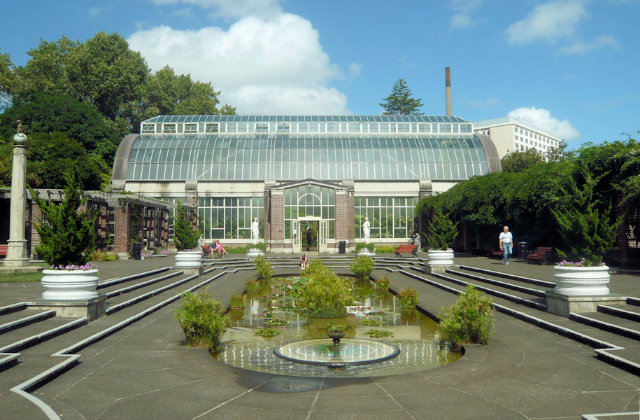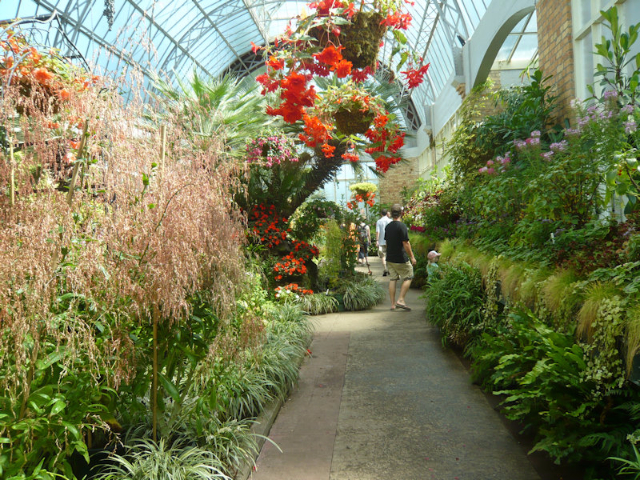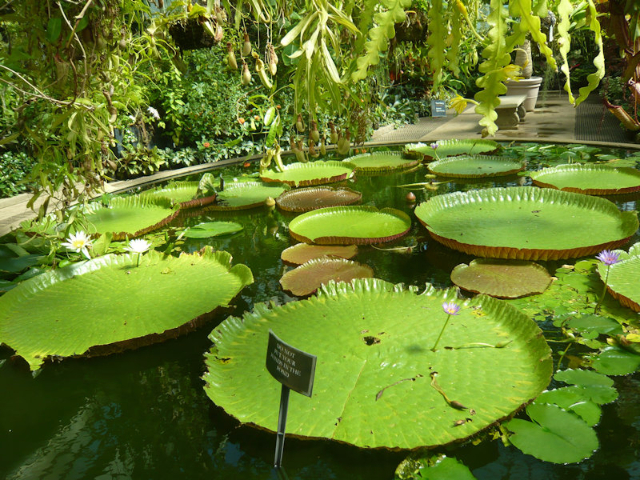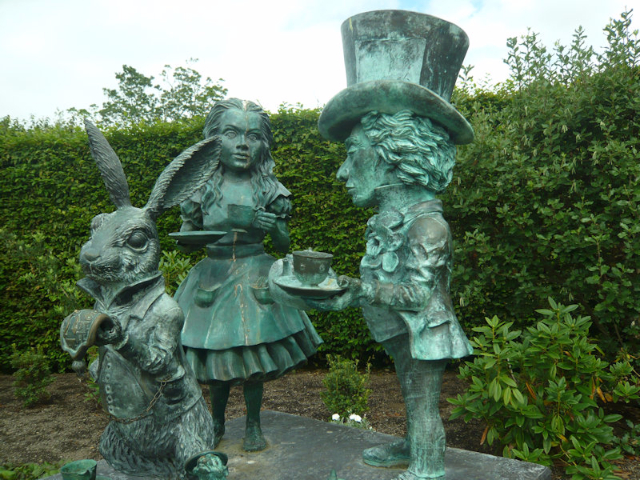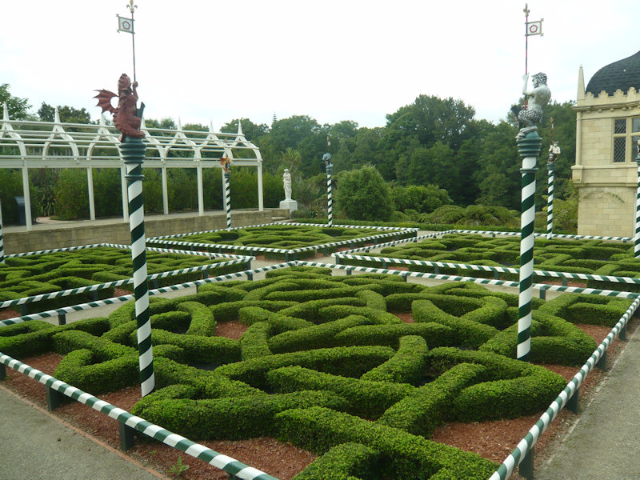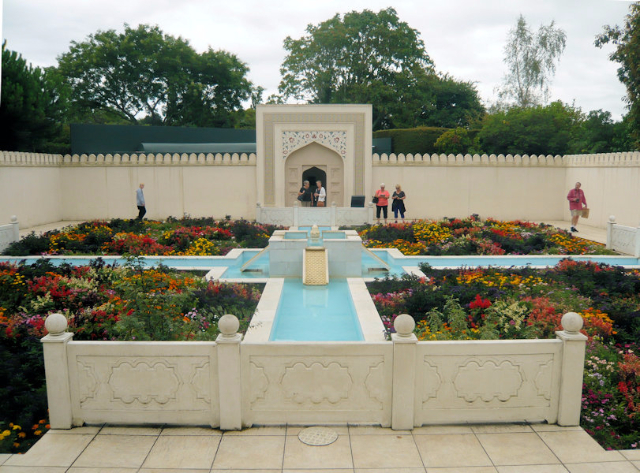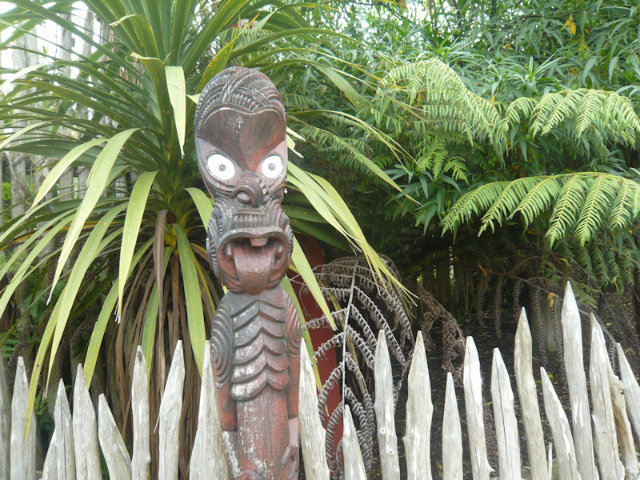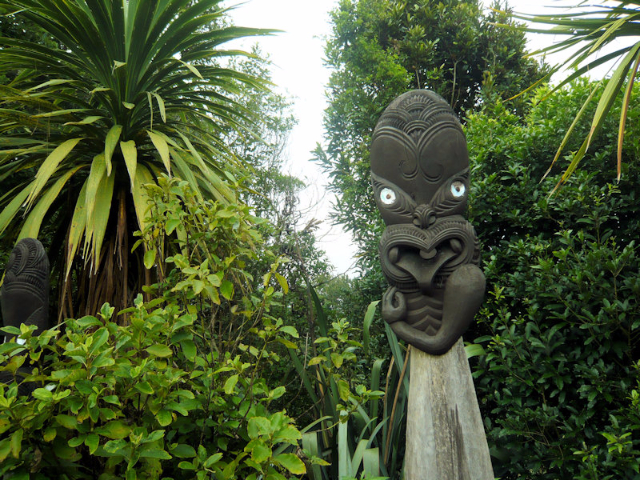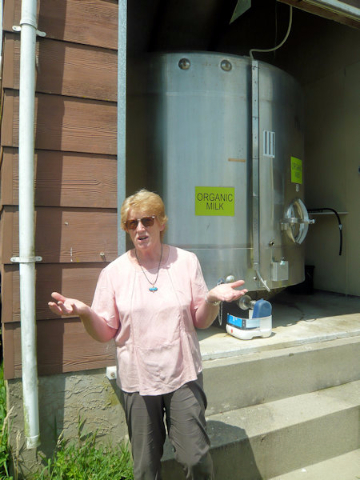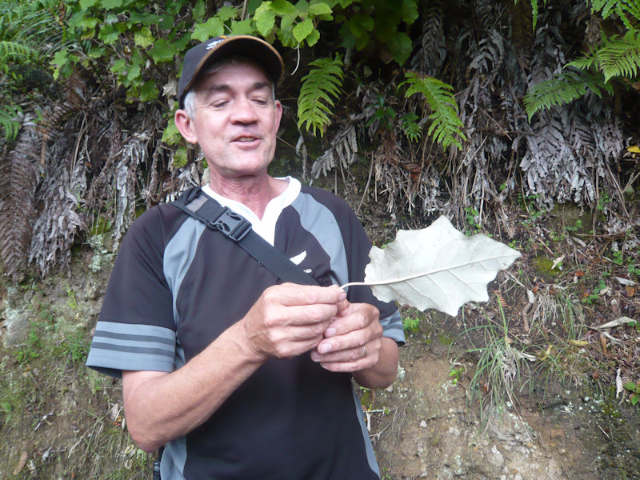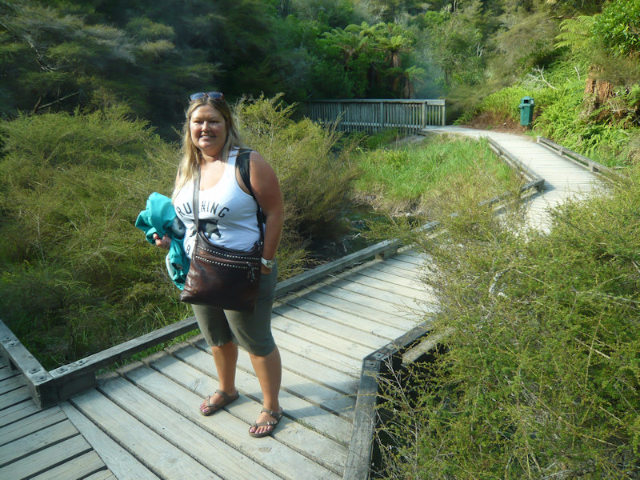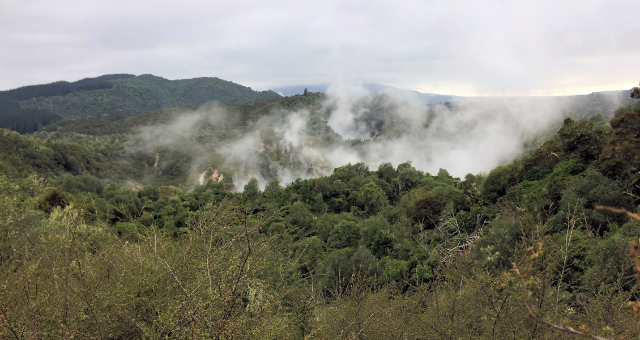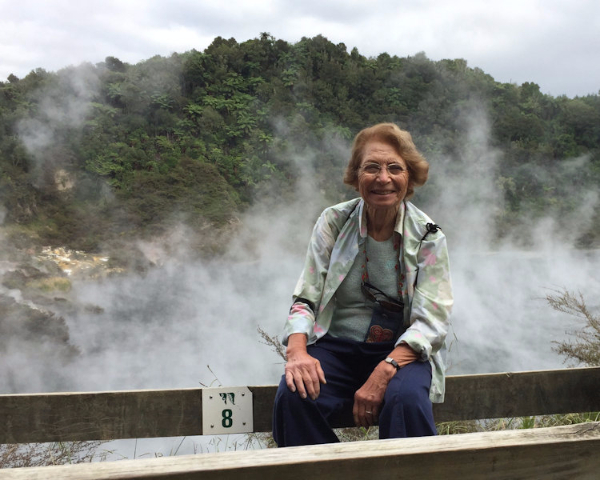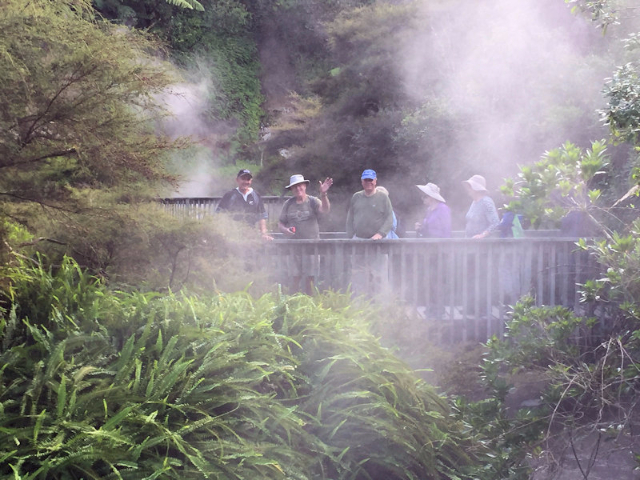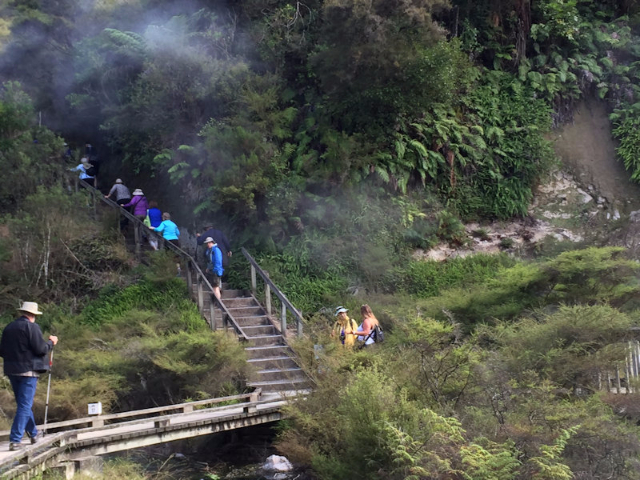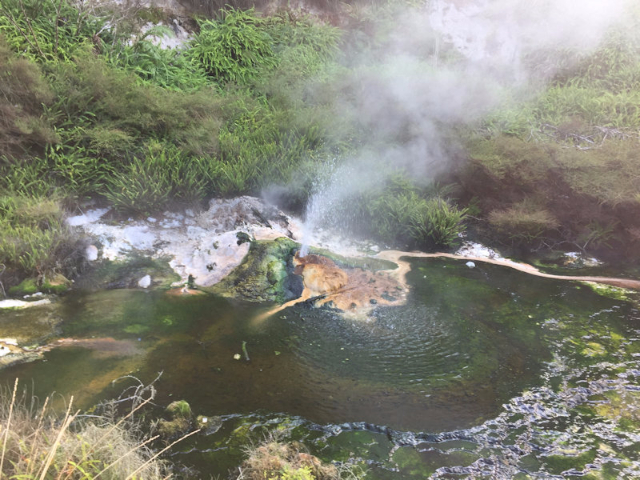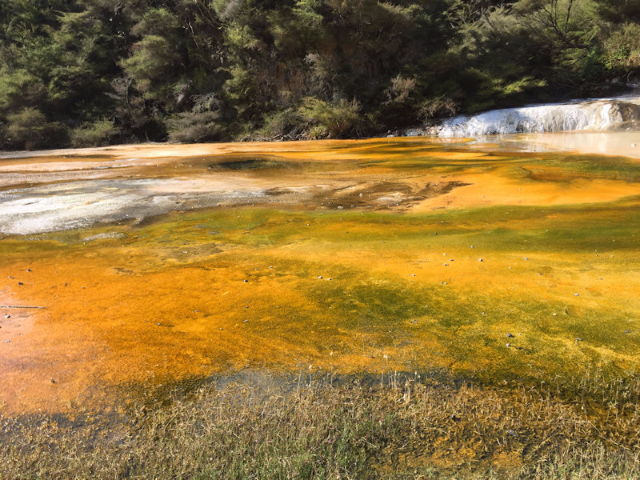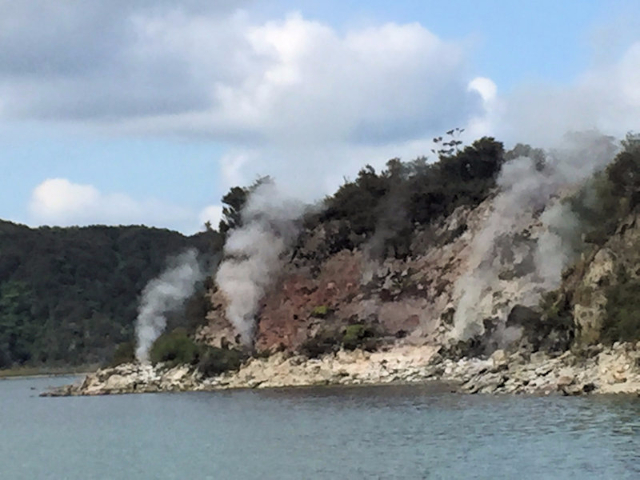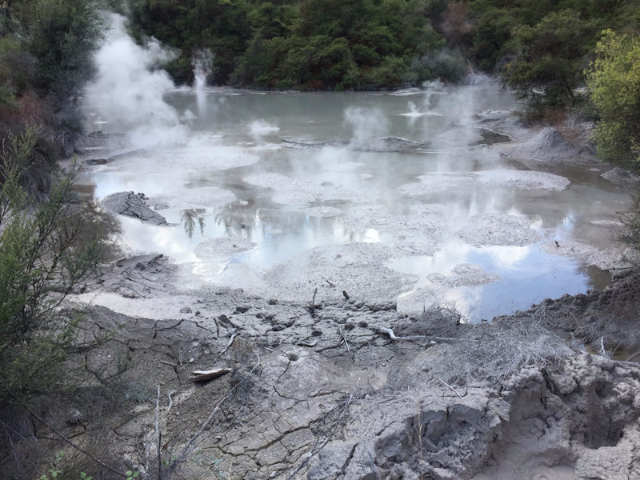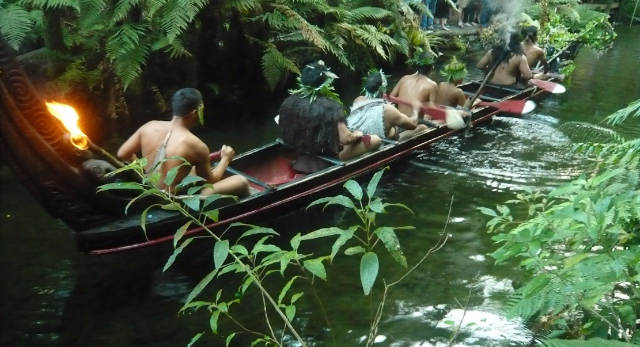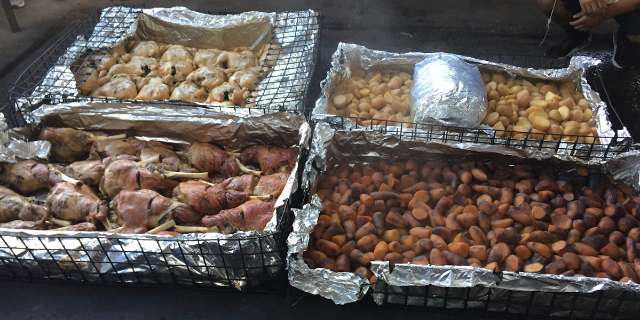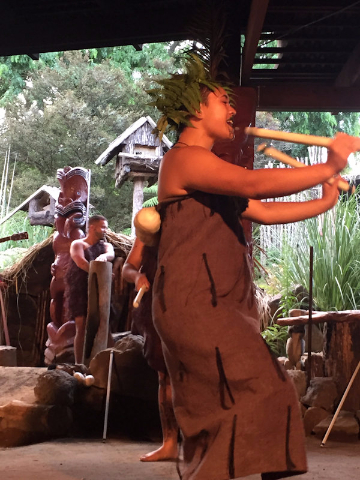New Zealand: North Island
Auckland, Rotorua and Waimangu Volcanic Valley
By: Zeren Earls - Apr 25, 2017
Leaving Paihia early in the morning, we traveled overland back to Auckland to start our main journey with the full group of sixteen. Along the way, road signs encouraged drivers to take a break if feeling tired. Victoria, our Kiwi guide, informed us that our arrival coincided with the final day of a Maori portrait exhibition at the Auckland Art Gallery with highly acclaimed works, that we should not miss, by Gottfried Lindauer, who had emigrated in 1874 from Bohemia (now the Czech Republic).
Delighted with the central location of the City Life Auckland Hotel on Queen Street, I walked over to the Art Gallery soon after we checked in. The busy streets reflected the fact that Auckland, though not the capital, is New Zealand’s largest city, with a population of 1.5 million, a third of the country’s total, and 825 new dwellers arriving each week, adding to the housing shortage. The Art Gallery, free of charge to all visitors, was overflowing with people on its three levels, covering international art from medieval times to modernism.
Arriving just in time for a curatorial talk, I got a good grounding in Lindauer’s technique and subjects. In Maori culture, images of ancestors are revered, as they carry the esteem of the people depicted. Due to his captivating ability to reproduce subjects in color, Lindauer was commissioned to create portraits for private homes, meeting houses and funerals. The artist relied heavily on photography for accuracy.
Starting with the Pakeha (European New Zealander) portraits from the artist’s earliest commissions, I made my way to the Maori portraits, a total of 120 works arranged by region and tribal grouping, from the northern tip of the North Island to the South Island. The portraits of Maori chiefs and other distinguished leaders from the late 19th and early 20th century, some in multiple versions of the same subject, such as Heeni Hirini and Child, captivated me for several hours.
On the way back, I came upon an outdoor sculpture, Gateway, by Chris Booth, commissioned in 1987 by the Auckland City Gallery. Consisting of stacked basalt boulders gifted by the Ngati Kura people of Matauri Bay in Northland, the towering gateway frames nearby trees and buildings from different angles – a nice contemporary addition to the cityscape.
A distinctive structure of the urban landscape is the 750-foot Sky Tower, which rises above all surrounding buildings and is visible from many points throughout the city. Another unique encounter was a pedestrian green zone created from artificial grass on the street between high-rise corporate buildings. Lined with canvas deckchairs, the space attracts people to relax with an assortment of electronic devices in hand.
Back at the hotel following my solo urban encounters, we left to catch a ferry across the harbor to Devonport for a welcome dinner in honor of the full group. Auckland has the highest number of boats per capita in the world, which was evident as we approached the harbor. Elegant sailboats large and small graced the waters, even as dusk silhouetted the Auckland skyline.
We had an early start in the morning, meeting with a Maori kaumatua (elder) from the Ngati Whatua tribe to learn about the traditions of his people. We met in front of the War Memorial Museum, a neoclassical building which sits on the grassy remains of a dormant volcano in a large public park. Our cultural immersion began with a Maori greeting, which involves pressing noses, passing the breath of life from one person to the other. Chosen by the group, I became their designated greeter and spokesperson, as I was familiar with the custom from a previous business trip to New Zealand. After pressing noses with me, our host welcomed us to his country; in turn, I conveyed greetings from America and the nine states we represented. Learning about Maori ways continued at kaumata’s home, where we met his wife and daughter over refreshments.
During time on our own in the afternoon, I returned to the War Memorial Museum, which has a cenotaph out front honoring New Zealand war heroes of the 20th century. The museum’s top floor is dedicated to an extensive permanent collection covering wars within New Zealand as well as participation in overseas conflicts. Of special interest is a large collection of Maori and Pacific island artefacts, including a meeting house, a war canoe and various carved doorways, each topped with the presiding deified ancestor and creator of a tribe and thus marked as an important symbolic threshold. The museum also has an extensive natural history section.
The Cool House and connecting courtyard, built in 1921, are located in the park behind the museum. The tropical glass house with hanging plants opens onto a pond with gigantic water lilies. Within walking distance is Hamilton Gardens, a former city rubbish drop transformed into award-winning international gardens, two of which are still under construction.
My enchanting visit through three of the gardens began with a sculpture of characters from Alice’s Adventures in Wonderland depicting Alice and the Mad Hatter conversing over tea while the March Hare listens in. An exchange in the book by Lewis Carrol is paraphrased on a nearby plaque, which reads “If you don’t know where you are going, any road will take you there”, shedding light on the conversation. The Tudor Garden, an interpretation of a 16th-century English renaissance garden, welcomes visitors with knotted plants and fantasy beasts propped on poles. The Indian Char Bagh Garden, representing a 16th-century symbolic four-quartered garden with an adjacent pavilion, harks back to Mughal aristocracy. A garden demonstrating traditional Maori horticulture is closely connected to spiritual beliefs, with carved figures among plants representing various ancestral figures.
Auckland stretches almost 100 km from north to south and sits atop 44 volcanic peaks. Yet it is a very walkable city, where one is never far from the coast. I decided to spend the rest of my free time walking from the gardens to the Sky Tower to take in 360-degree views of the city. Crossing a bridge, I reached the tower in about 30 minutes at a leisurely pace.
Admission to the tower is $29 (about $20 US). The first stop on the elevator is the Sky Café at level 50. The Observation Deck at 610 feet is on level 51, where I got off to take pictures. The view stretched from Westhaven Marina, home to over 2000 boats, to One Tree Hill, an important Maori historical site surrounded by the city’s largest parkland on the east side. Upon request, a separate small elevator takes visitors to the Sky Deck on level 60 at 722 feet.
While I enjoyed views from the tower, others in the group opted for a 90-minute bridge climb or a sail on board an America’s Cup boat; the former cost about $100 US, the latter $150. Following a full day, we returned to the hotel to prepare for our departure to Rotorua in the morning.
Traveling 230 km southeast of Auckland to Rotorua, we left the high-rises of the city for dairy land, where there are more sheep than people due to former government subsidies for wool, which have now ended to control production. Along the way, we stopped to visit a family and learn about life on a dairy farm. An automated system milks grass-fed cows twice daily, but we were unable to see the process since our visit fell in between milking times. Looking at the production line of equipment, which milks cows very rapidly, I could not help but contrast this visit to a farm I had seen in Mongolia, where each cow was milked by hand, requiring many staff on the job. We then visited the storage area, where milk was kept in large steel bins, marked “organic” for the market. Following tea and refreshments with the husband-and-wife team at the farm, we bid them goodbye.
A Merino wool shop, housed in two structures looking like sheep, beckoned for attention before we got back on the road to Rotorua. Inside, in addition to a variety of stalls with wool items, we spotted an ice cream stand featuring New Zealand’s most popular flavor, “hokey pokey”, which consists of plain vanilla ice cream with small solid lumps of honeycomb toffee. Having a soft spot for ice cream, I had to try this Kiwiana (typical New Zealand) dairy product – delicious.
Rotorua is located in New Zealand’s Bay of Plenty region on the shore of Lake Rotorua. It is famous for its geothermal activity and its predominant Maori culture, as it is home to 40% of New Zealand’s Maori, which make up 15% of the total population. When the Maori, a people of Polynesian origin, arrived in New Zealand around 1300 AD, they quickly recognized the advantages of the hot springs for cooking, bathing and warmth, thus settling permanently in the thermal region. After we entered the town, we gradually got used to the sulphur smell and were delighted to check in to the Wai Ora Lakeside Spa Resort, where we stayed for two nights. I felt fortunate to have been assigned a luxury suite with a jacuzzi, due to my lengthy travel record with OAT.
In the morning, we set out to explore the Waimangu (“black water”) Volcanic Valley, so named by the Maori because of the appearance of shooting columns of water mixed with sand and mud following Mount Tarawera’s last eruption in 1886. Met by a nature guide at the Waimangu geothermal park, we followed him on footpaths lined with majestic trees as he identified native plants, explaining that the valley was unique for its total regeneration after the devastation of a volcanic eruption.
At a distance, Echo Crater emerged, with its elongated shape defined by hydrothermal activity. Of the several craters formed by the eruption, two of the larger ones are occupied by Frying Pan and Inferno Crater Lakes, the former known as the world’s largest hot spring. Algae and bacteria that grow in this fertile environment add to the color palette of the scenic surroundings.
The valley also encompasses Lake Rotomahana, which we cruised by boat, viewing hydrothermal activity along the shoreline. The boat took us by hot streams entering the lake from Waimangu, layers of compact yellowish rock walls, terraces and steaming cliffs. A new discovery was boiling mud pots, which result from the interaction of geothermal fluid and water with steam and gas boiling 10-100 meters under the earth. Following wondrous hikes through the valley, an enchanting voyage on the lake and a quick immersion in geological phenomena, we returned to our hotel.
In the evening, I opted for a Maori Cultural Experience on a tour to the village of Mitai. We were greeted with a speech and an unveiling of a hangi, a traditional Maori meal of chicken, lamb, stuffing, potatoes and kumara (sweet potatoes) cooked in a pit. Meanwhile, we witnessed warriors in traditional dress pass by on the Wai-o-Whiro stream in a hand-carved waka (war canoe), chanting as they paddled. The hangi feast expanded to include seafood chowder, and Pavlova or steam pudding for dessert. After dinner, we enjoyed a cultural performance, which included calls of welcome, dances of strength and vigor, and a weapon display, along with speeches and songs, ending with a hongi (nose pressing) as a sign of friendship and sharing the breath of life, marking the finale of the program. A walk in the bush to see a nighttime spectacle of glow worms ended the evening on a glowing note.
The following morning, we flew to Queenstown to begin our adventures on New Zealand’s South Island.
(To be continued)

